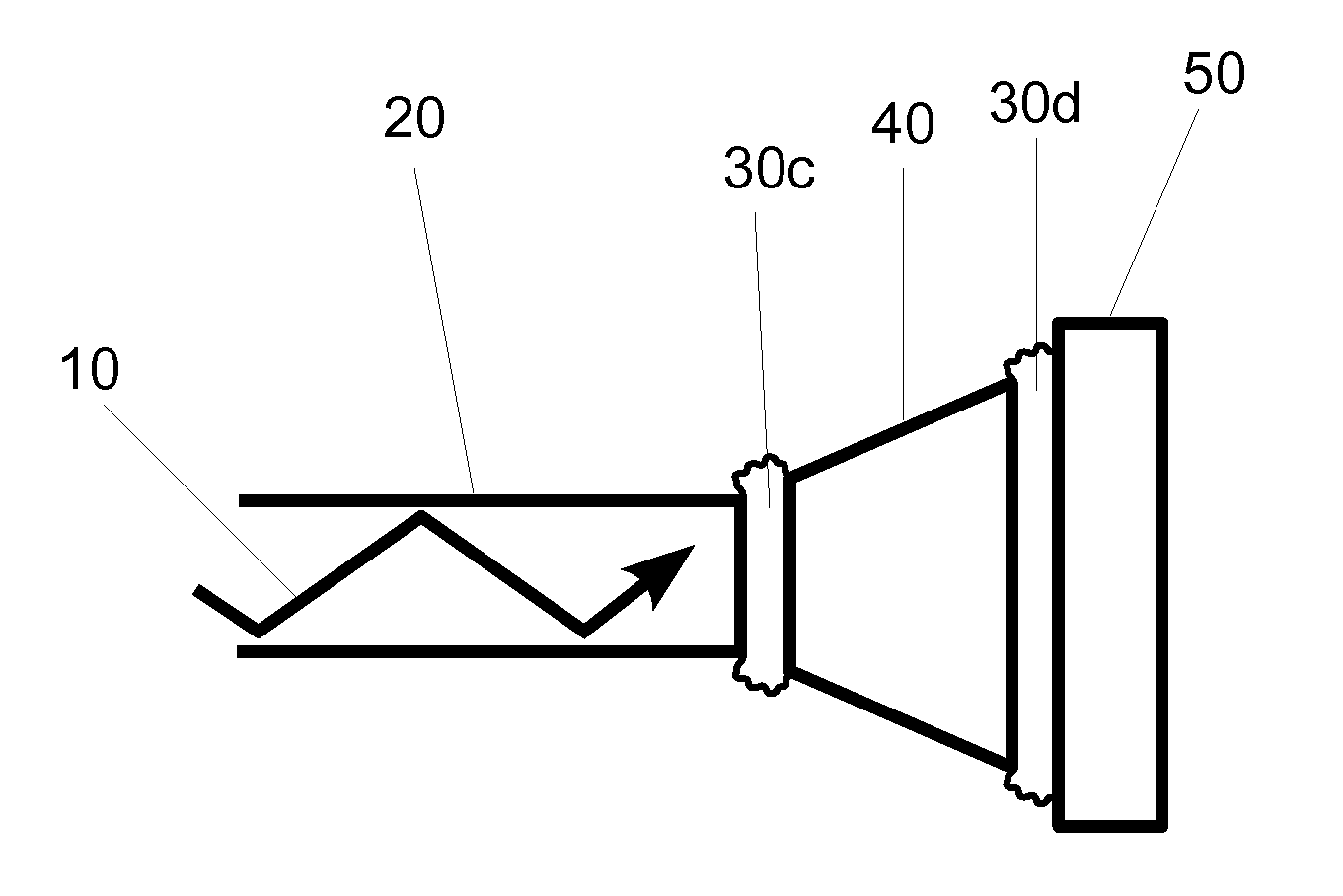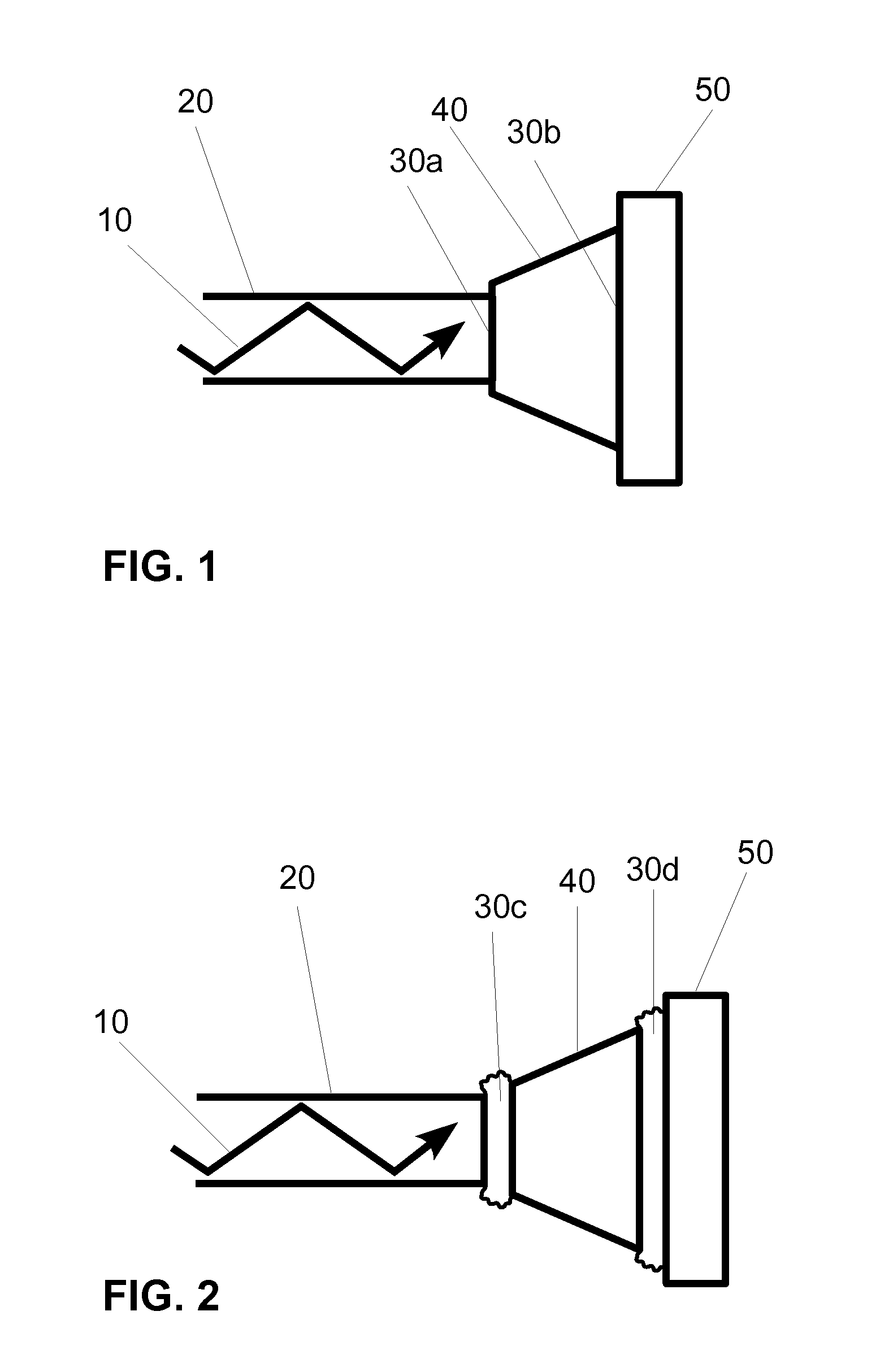Non-Reflective Optical Connections in Laser-Based Photoplethysmography
- Summary
- Abstract
- Description
- Claims
- Application Information
AI Technical Summary
Benefits of technology
Problems solved by technology
Method used
Image
Examples
Embodiment Construction
[0024]One embodiment of a light delivery apparatus for a photoplethysmographic device is shown in FIG. 1. Laser light 10 is propagating through optical element 20 toward optical element 40. The light from optical element 20 propagates across the physical contact connection 30a and then propagates through optical element 40 toward optical element 50. In passing from optical element 40 to optical element 50 the laser light again passes through a physical contact connection 30b.
[0025]In conventional photoplethysmographic devices the light sources, also called emitters, generate the light that is used for sensing the blood analytes or the physiological parameters to be measured. The analytes or physiological parameters to be measured may include arterial blood oxygen saturation or level (also referred to as O2Hb, [O2Hb], SaO2, or SpO2), carboxyhemoglobin level (also referred to as COHb, [COHb], or SpCO), methemoglobin level (also referred to as metHb, [metHb], or Spmet), pulse rate (al...
PUM
 Login to View More
Login to View More Abstract
Description
Claims
Application Information
 Login to View More
Login to View More - R&D
- Intellectual Property
- Life Sciences
- Materials
- Tech Scout
- Unparalleled Data Quality
- Higher Quality Content
- 60% Fewer Hallucinations
Browse by: Latest US Patents, China's latest patents, Technical Efficacy Thesaurus, Application Domain, Technology Topic, Popular Technical Reports.
© 2025 PatSnap. All rights reserved.Legal|Privacy policy|Modern Slavery Act Transparency Statement|Sitemap|About US| Contact US: help@patsnap.com


